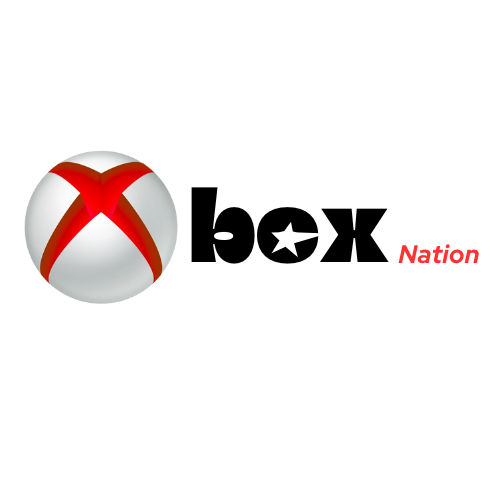In the fast-paced world of digital media, a marketing campaign is rarely just a collection of advertisements. It’s a mission statement. It’s a declaration of intent. Microsoft’s recent “This is an Xbox” campaign is a masterclass in this philosophy. Gone are the days of focusing solely on a single black or white box under your television. The message is now broader, more inclusive, and infinitely more ambitious. It signals a fundamental shift in strategy, moving from a simple hardware manufacturer to the architect of a sprawling, all-encompassing digital entertainment ecosystem.
- The Campaign Itself: A Paradigm Shift in Messaging
- The Four Pillars of Microsoft’s Gaming Empire
- Pillar 1: The Cloud – The Azure-Powered Revolution
- Pillar 2: The Subscription – Game Pass as the “Netflix for Games”
- Pillar 3: The Content – The Multi-Billion Dollar Content Engine
- Pillar 4: The Hardware – The Versatile Entry Points
- The Live Picture: Latest Developments and the Road Ahead
- What This Means for Everyone
- For the Gamer: Unprecedented Choice and Value
- For the Game Developer: A New Paradigm of Distribution
- For the Investor (MSFT): A Key Growth Driver
- Conclusion: The New Definition of “Xbox”
This campaign isn’t just about selling consoles; it’s about selling a vision. A future where the barrier to entry for premium gaming is not a $500 hardware purchase, but a flexible subscription. A future powered by colossal investments in cloud infrastructure and world-class content. This post will deconstruct this vision, exploring the four key pillars that support Microsoft’s multi-billion dollar gamble on the future of gaming: the cloud, the subscription, the content, and the hardware. We will dive deep into the business strategies, technological innovations, and landmark corporate acquisitions that define this new era. This is not just the story of a gaming console; it’s the story of the future of interactive entertainment.
The Campaign Itself: A Paradigm Shift in Messaging
Before dissecting the strategy, it’s crucial to understand the message. The “This is an Xbox” spots are a whirlwind of diversity not just in the people playing, but in how and where they are playing. We see gamers on giant 4K TVs, on laptops, on tablets, and on smartphones. The focus isn’t the hardware; it’s the experience.
From Console Wars to Ecosystem Dominance
For decades, the narrative was simple: PlayStation vs. Xbox. It was a battle of exclusive titles, teraflops, and console sales figures. It was a war fought in retail stores and on holiday wish lists. Microsoft’s new approach effectively declares a ceasefire in the traditional console war by choosing to fight on an entirely different battlefield.
The message is no longer “Our box is better than their box.” It’s “Our ecosystem is everywhere.” This is a pivot from a product-centric model to a service-centric, platform-agnostic one. They are leveraging their immense corporate strengths namely, their global cloud computing network and deep financial pockets to change the rules of the game entirely. This strategic repositioning is a direct challenge not just to Sony, but to other digital entertainment giants like Netflix, Amazon, and Apple.
Analyzing the Core Message: Play Anywhere, with Anyone
The key takeaway from the campaign is accessibility. Microsoft is systematically dismantling the traditional barriers of gaming:
- Financial Barriers: The Xbox Series S, combined with Xbox Game Pass, offers the lowest point of entry into modern, next-gen gaming. This is a deliberate strategy to onboard millions of new players who might be priced out of a $500 console or a $2,000 gaming PC.
- Hardware Barriers: Through Xbox Cloud Gaming, the power of a Series X console is accessible on devices people already own. This democratizes high-fidelity gaming, making it available to a global audience that may never own a dedicated gaming console.
- Social Barriers: The emphasis on cross-play and a unified online network means your choice of hardware doesn’t isolate you from your friends. An Xbox player can team up with a PC player, who can be joined by a friend playing on their phone via the cloud.
This inclusive messaging is not just good PR; it’s a core component of their business growth strategy, aiming for a Total Addressable Market (TAM) of billions of potential players, not just the hundreds of millions of console owners.
The Four Pillars of Microsoft’s Gaming Empire
Microsoft’s vision is built upon four interconnected and mutually reinforcing pillars. Understanding how these elements work together is key to understanding the sheer scale and audacity of their plan.
Pillar 1: The Cloud – The Azure-Powered Revolution
This is arguably Microsoft’s most significant and sustainable competitive advantage. While competitors rent server space or build out their own cloud networks from a less advanced starting point, Microsoft owns and operates Microsoft Azure, one of the world’s largest and most sophisticated cloud infrastructure platforms.
Xbox Cloud Gaming (formerly xCloud) is not just a feature; it’s a trojan horse for showcasing the power of Azure. Every seamless session of Starfield streamed to a tablet in an airport is a real-world demonstration of Azure’s low-latency, high-bandwidth capabilities.
The Technical Advantage of Azure Data Centers
Microsoft has invested billions of dollars in building data centers across the globe. For cloud gaming, this geographical distribution is critical. Proximity to the user is the single most important factor in reducing latency—the delay between a player’s input and the corresponding action on screen. A dense network of data centers means more users are closer to an Azure server, resulting in a more responsive and console-like experience.
The hardware within these data centers has been upgraded to custom Xbox Series X silicon. This means when you stream a game, you are literally running it on a dedicated, high-end Xbox blade in a secure, climate-controlled facility. This allows Microsoft to guarantee a consistent level of performance that is difficult for competitors to match without similar investments in custom gaming hardware at a server level. This integration of hardware and cloud services creates a powerful synergy that drives down costs and improves performance.
The Future: Cloud-Native Gaming and AI Integration
The current iteration of cloud gaming involves streaming a console version of a game. The next frontier is “cloud-native” gaming. These are games designed from the ground up to leverage the immense computational power of the cloud. Imagine game worlds with persistent, large-scale physics simulations, or non-player characters (NPCs) powered by advanced Artificial Intelligence (AI) models that would be impossible to run on local hardware. Microsoft is uniquely positioned to pioneer these experiences, offering developers access to Azure’s vast resources, including its cutting-edge AI and machine learning tools, to build the next generation of interactive entertainment.
Source: Xbox Cloud Gaming Official Page
Pillar 2: The Subscription – Game Pass as the “Netflix for Games”
If Azure is the foundation, Xbox Game Pass is the engine of the entire ecosystem. It has been described as “the best deal in gaming,” and for good reason. For a monthly fee, subscribers get access to a curated library of hundreds of games, including all first-party Xbox Game Studios titles on the day of their release.
Deconstructing the Subscription Economy Model
Game Pass is a classic application of the subscription economy model, shifting revenue from volatile, hit-driven individual game sales to a more stable, predictable stream of recurring revenue. This model offers several advantages for Microsoft’s business:
- Customer Lifetime Value (CLV): By locking users into an ecosystem, Microsoft significantly increases the long-term value of each customer. A user subscribed for several years is far more valuable than one who buys a single game every two years.
- Reduced Piracy: Subscription services have proven to be a powerful antidote to digital piracy by offering overwhelming value and convenience.
- Data and Analytics: The platform provides Microsoft with invaluable data on player behavior. They know what games are being played, for how long, and when players drop off. This data is a goldmine for informing future game development, content acquisition, and service improvements.
The Tiered Strategy: A Funnel for Every Consumer
Microsoft offers multiple tiers of Game Pass (Core, Console, PC, and Ultimate) to cater to different segments of the market. This tiered approach acts as a sales funnel. A new user might start with the budget-friendly Series S and a basic Game Pass subscription. As they become more invested in the ecosystem, they are incentivized to upgrade to Ultimate to unlock cloud gaming, PC access, and EA Play, maximizing their engagement and their value to Microsoft.
Source: The Verge: “Microsoft’s Xbox Game Pass strategy, explained”
Pillar 3: The Content – The Multi-Billion Dollar Content Engine
A subscription service is only as good as its content. Recognizing this, Microsoft has gone on an unprecedented spending spree, transforming from a platform holder into a content powerhouse. This strategy is centered on acquiring established game development studios and their invaluable intellectual property (IP).
The Landmark Activision Blizzard King Acquisition
The centerpiece of this strategy is the colossal $68.7 billion acquisition of Activision Blizzard King (ABK). This is one of the largest mergers and acquisitions (M&A) in the history of the tech industry, and it fundamentally reshapes the gaming landscape.
The deal faced significant antitrust scrutiny from regulatory bodies worldwide, including the Federal Trade Commission (FTC) in the US and the Competition and Markets Authority (CMA) in the UK. These legal and regulatory battles were complex, focusing on concerns that Microsoft could make blockbuster franchises like Call of Duty exclusive to its platform, thereby harming competition. Microsoft’s success in navigating these regulatory hurdles, albeit with some concessions (like divesting cloud gaming rights for ABK games in Europe to Ubisoft), was a monumental victory for their legal and corporate strategy teams.
What the ABK Acquisition Brings to the Table:
- Blockbuster IPs: Microsoft now owns some of the biggest names in gaming:
- Call of Duty: A multi-billion dollar annual franchise with a massive, dedicated player base. The question of its day-one inclusion on Game Pass is one of the most significant strategic decisions facing the company.
- World of Warcraft: A legendary massively multiplayer online role-playing game (MMORPG) with a long-standing subscription base.
- Diablo: A cornerstone of the action RPG genre.
- Overwatch: A highly popular hero shooter and esports staple.
- Candy Crush Saga (from King): Crucially, this gives Microsoft a massive foothold in the multi-billion dollar mobile gaming market, an area where they previously had a minimal presence.
This acquisition isn’t just about adding games to Game Pass. It’s about owning cultural phenomena and securing decades of future content, insulating them from the rising costs of third-party licensing and development.
Source: Bloomberg: “Microsoft Completes $69 Billion Activision Deal”
Pillar 4: The Hardware – The Versatile Entry Points
While the strategy is service-focused, hardware remains a critical component. Microsoft’s two-console approach with the Xbox Series X and Series S is a stroke of strategic genius.
Xbox Series X: The Premium Experience
The Xbox Series X is the flagship, a technological powerhouse designed for the core gamer who demands the best possible performance. It boasts:
- Custom AMD Zen 2 CPU and RDNA 2 GPU: Delivering high frame rates and true 4K resolution.
- Ultra-Fast NVMe SSD: Drastically reducing load times, a key quality-of-life improvement.
- Advanced Features: Ray tracing, variable rate shading, and support for 120Hz displays.
The Series X is designed to go head-to-head with high-end gaming PCs and the PlayStation 5, assuring the enthusiast market that Xbox is still committed to providing a top-tier, premium hardware experience.
Xbox Series S: The Game Pass Machine
The Xbox Series S is perhaps the more strategically important console. It’s smaller, all-digital, and significantly cheaper. While less powerful than the Series X, it targets 1080p/1440p resolutions and is perfectly capable of playing every modern Xbox game.
Its primary purpose is to serve as an affordable on-ramp to the Xbox ecosystem. It’s the “Game Pass machine.” A consumer can purchase a Series S and a Game Pass Ultimate subscription for less than the cost of a Series X alone, giving them immediate access to hundreds of games and the entire ecosystem. This lowers the barrier to entry and dramatically expands the potential audience for Game Pass, which is the ultimate goal.
Source: Xbox Wire: “Xbox Series X and Xbox Series S: Designing the Next Generation of Consoles”
The Live Picture: Latest Developments and the Road Ahead
The gaming industry is never static. Recent announcements and future trends give us a clearer picture of where this grand strategy is heading.
The Multi-Platform Pivot and the February 2024 Business Update
In a significant update in February 2024, Xbox leadership, including Phil Spencer, CEO of Microsoft Gaming, announced that four previously exclusive Xbox games would be released on competing platforms (PlayStation 5 and Nintendo Switch). This move, while surprising to some, is a logical extension of their “play anywhere” philosophy.
The strategy appears to be twofold:
- Maximize Revenue: Generate additional sales and revenue from established games on other platforms.
- Ecosystem Expansion: Use these games as “advertisements” for the broader Xbox ecosystem. A PlayStation player who enjoys Sea of Thieves might be more inclined to subscribe to Game Pass on PC to access the entire catalog or even buy an Xbox for the next big exclusive.
This is a pragmatic business decision, recognizing that in a service-oriented world, the goal is to grow the overall business, not just protect the walls of a single hardware platform.
The Future of Content and Hardware
With the ABK acquisition complete, all eyes are on the integration of its massive library into Game Pass. The addition of titles like Diablo IV is just the beginning. The long-term plan will involve a steady cadence of high-value content hitting the service to retain subscribers and attract new ones.
Furthermore, Phil Spencer has teased that the next generation of Xbox hardware will represent the “largest technical leap” ever seen in a console generation. This suggests a deep investment in next-generation silicon, potentially with a heavy emphasis on custom AI accelerators to power more intelligent game worlds and experiences, further blurring the lines between cloud-native and local processing.
What This Means for Everyone
Microsoft’s strategy has far-reaching implications for all stakeholders in the digital entertainment landscape.
For the Gamer: Unprecedented Choice and Value
For consumers, this vision translates to more choice and better value than ever before. You can choose to invest in premium hardware for the ultimate experience, opt for a budget-friendly entry point, or bypass dedicated hardware altogether and play on the devices you already own. The value proposition of Game Pass, especially with first-party titles and a growing library of ABK games, is difficult to overstate.
For the Game Developer: A New Paradigm of Distribution
For game developers, the Xbox ecosystem offers a powerful new avenue. Being included in Game Pass provides instant access to an audience of over 25 million subscribers (and growing). This can be particularly transformative for smaller, independent studios, allowing their games to find an audience they might never have reached through traditional sales models. Furthermore, Microsoft’s investment in cloud development tools via Azure promises to lower the barrier to creating more ambitious and technologically advanced games. This represents a significant B2B (business-to-business) opportunity within the gaming space.
For the Investor (MSFT): A Key Growth Driver
For investors in Microsoft (MSFT), the Gaming division is no longer a side project; it’s a core pillar of the company’s future growth, sitting alongside Azure and Office. It perfectly complements their cloud-first strategy and leverages their core corporate strengths. The shift to a recurring revenue model with Game Pass provides financial stability, while the massive content acquisitions secure a long-term pipeline of exclusive and high-value IP. The gaming division is a powerful engine for driving consumer engagement with the wider Microsoft ecosystem, from Windows PCs to Azure cloud services.
Conclusion: The New Definition of “Xbox”
The “This is an Xbox” campaign is the public face of a deeply sophisticated, long-term corporate strategy. Microsoft is leveraging its colossal financial and technological power to redefine what a gaming platform can be. An Xbox is no longer just a console.
It is a flexible subscription service.
It is a global cloud computing platform.
It is a vast library of world-class content.
It is a diverse family of hardware entry points.
It is a digital ecosystem designed to be accessible to anyone, anywhere, on any device.
Microsoft is not just playing the game; it is building the entire stadium, writing the rulebook, and selling tickets to a global audience. The success of this ambitious vision is not guaranteed, but it has undeniably set a new course for the entire interactive entertainment industry, and its shockwaves will be felt for the next decade and beyond.








